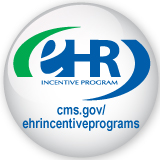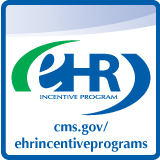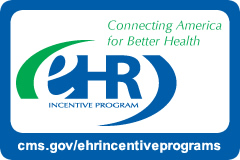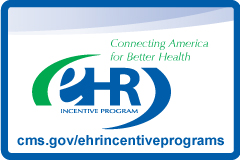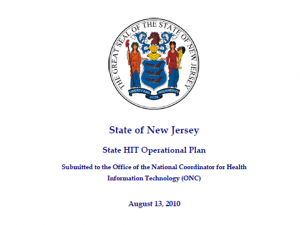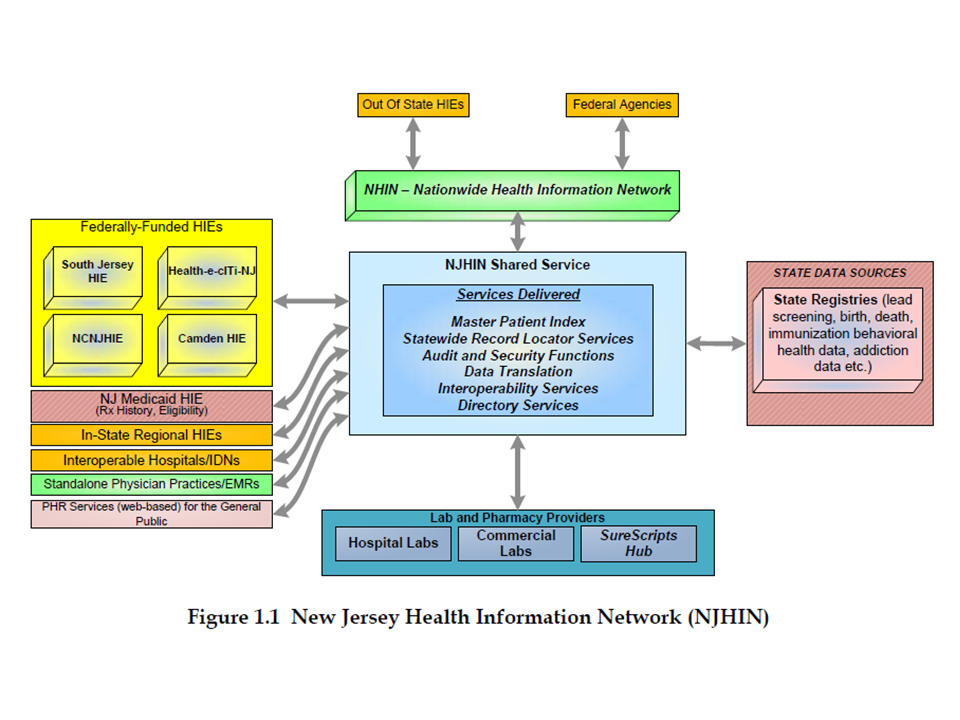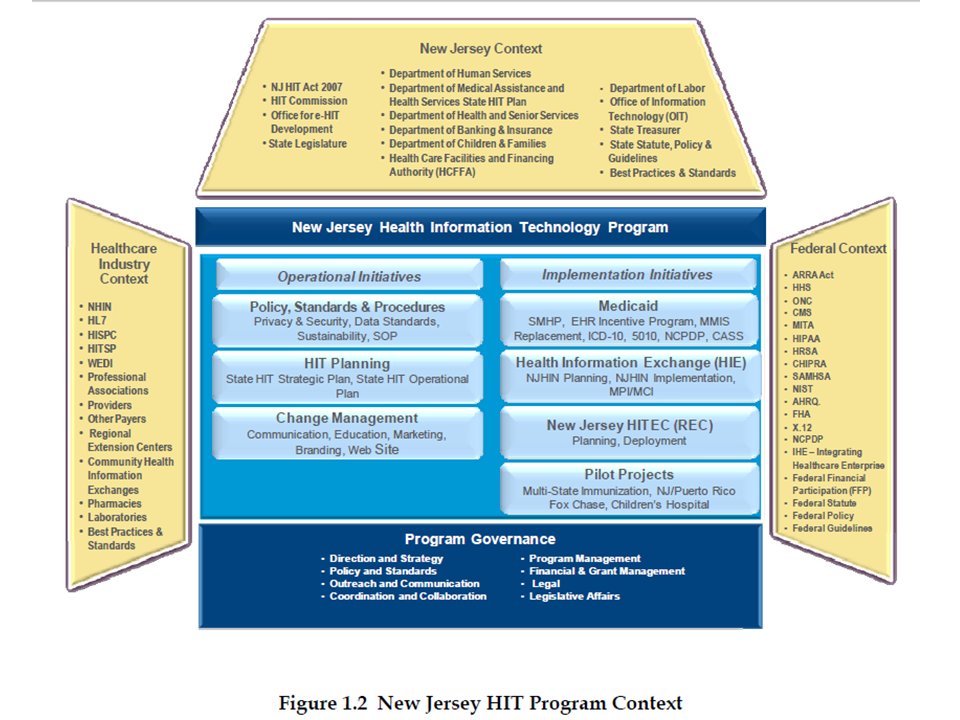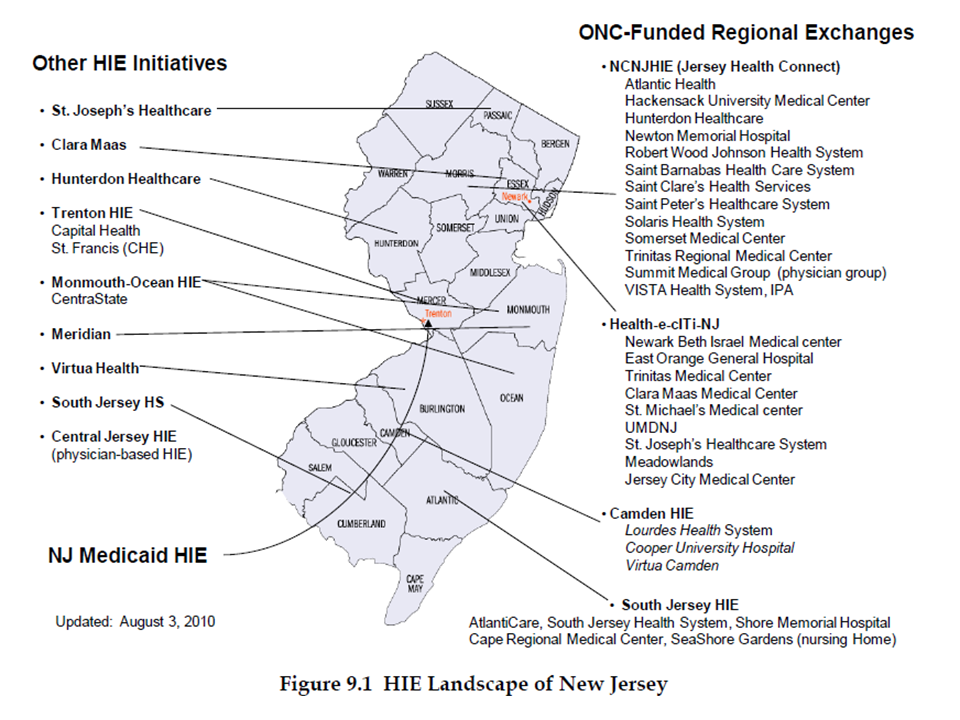State Medicaid Directors Letters from CMS on Health IT Programs
2010 and 2009 Letters
This post includes both the latest letter from 2010 in PDF and html formats, that was issued this week; and a link to letter from about one year ago in 2009 in PDF format only .
August 17, 2010 Letter:
Federal Funding for Medicaid HIT Activities
ARRA of 2009 Section 4201
PDF Version (Excerpted below in html)
September 1, 2009 Letter:
Federal Funding for Medicaid HIT Activities
ARRA of 2009 Section 4201
PDF Version
August 17, 2010 CMS Letter to State Directors on Health IT:
DEPARTMENT OF HEALTH & HUMAN SERVICES
Centers for Medicare & Medicaid Services
Baltimore, Maryland
Center for Medicaid, CHIP and Survey & Certification
SMD# 10-016
August 17, 2010
Re: Federal Funding for Medicaid HIT Activities
Dear State Medicaid Director:
This letter provides guidance to State Medicaid agencies regarding implementation of section 4201 of the American Recovery and Reinvestment Act of 2009 (the Recovery Act), Pub. L. 111-5, and our recently published regulations at 42 CFR Part 495, Subpart D. Section 4201, as well as our final regulations, will allow the payment of incentives to eligible professionals (EPs) and eligible hospitals to promote the adoption and meaningful use of certified electronic health record (EHR) technology.
The Recovery Act provides 100 percent Federal financial participation (FFP) to States for incentive payments to eligible Medicaid providers to adopt, implement, upgrade, and meaningfully use certified EHR technology, and 90 percent FFP for State administrative expenses related to the program.
The Centers for Medicare & Medicaid Services (CMS) issued a State Medicaid Director (SMD) letter on September 1, 2009, that provided guidance to States on allowable expenses for activities supporting the administration of incentive payments to providers. CMS has now promulgated final regulations that also govern State administrative expenses related to administering the program. Both the SMD letter and our regulations at 42 CFR section 495.318 explain that, in order to qualify for the 90 percent FFP administrative match, a State must, at a minimum, demonstrate to the satisfaction of the Secretary compliance with three requirements:
• Administration of Medicaid incentive payments to Medicaid EPs and eligible hospitals;
• Oversight of the Medicaid EHR Incentive Program, including routine tracking of meaningful use attestations and reporting mechanisms; and
• Pursuit of initiatives that encourage the adoption of certified EHR technology for the promotion of health care quality and the electronic exchange of health information.
Page 2 – State Medicaid Director
This letter and the accompanying enclosures provide more detailed guidance from CMS on the expectations relating to the activities and potential uses of the 90/10 matching funds.
I. Administration of the Medicaid EHR Incentive Program
Title IV, Division B of the Recovery Act established the Medicare and Medicaid EHR incentives programs, as one component of the Health Information Technology for Economic and Clinical Health (HITECH) Act. This initiative supports the goals of health reform by helping to improve
Americans’ health, and increase safety and efficiency in health care through expanded use of EHRs. Accordingly, States’ administration of the Medicaid EHR Incentive Program, and their role in fostering adoption and meaningful use of certified EHR technology, are essential components of broader reforms. States can receive the enhanced FFP for approved design, development, and implementation of systems and processes that are necessary to effectively administer the Medicaid EHR Incentive Program. When developing their implementation timelines, States should consider the critical role the Medicaid EHR Incentive Program plays in the success of related HITECH programs. In order for States to benefit most from available Federal resources, including time-limited funding and technical assistance, timely initiation of their Medicaid EHR Incentive Programs (i.e., as soon as possible in 2011) is important.
Enclosure A outlines CMS’ expectations and provides examples of potentially allowable activities and reasonable costs related to State administration of the program.
II. Oversight of the Medicaid EHR Incentive Program
Under section 1903(t)(9)(B) of the Social Security Act and our recently published regulations at 42 CFR Part 495, Subpart D, States are required to conduct adequate oversight of the Medicaid EHR Incentive Program. Although the provider incentive payments are paid by the States, they are 100 percent reimbursable under Medicaid. States must ensure that the program meets all statutory and regulatory requirements and is implemented in a manner that minimizes the potential for fraud, waste and abuse. The 90 percent matching rate for FFP is available to States for approved processes, systems, and activities necessary to ensure that the incentive payments are being properly made to the appropriate providers, in the appropriate circumstances, and in an auditable and defensible manner. We emphasize that an effective and efficient oversight strategy is one that is timely, targeted, and balances risk with available auditing resources.
Enclosure B provides additional information about CMS’ initial expectations for States’ auditing and oversight of their Medicaid EHR Incentive Program.
III. Pursuing Initiatives to Encourage the Adoption of Certified EHR Technology and Health Information Exchange
CMS expects that State Medicaid agencies will have a role in the promotion of EHR adoption and health information exchange. HITECH provided several funding sources, including various grant programs through the Office of the National Coordinator for HIT (ONC) for States to achieve improved health care outcomes through health information technology (HIT). Medicaid plays an important role as both a payer and a collaborator with these other HIT initiatives to produce the desired impact on the health care system. Where possible, CMS encourages State Medicaid agencies to collaborate on HIT initiatives with Federal programs and other partners in
Page 3 – State Medicaid Director
the States, such as public health departments, county governments, and local governments. Costs will be distributed equitably across all payers following fair share and cost allocation principles, per section 495.358.
Enclosure C outlines the CMS guiding principles for the availability of the 90 percent FFP administrative matching funds for basic administration and oversight of the Medicaid EHR Incentive Program, as well as efforts to promote its success among eligible Medicaid providers.
IV. State Medicaid Health Information Technology Plan (SMHP) and HIT Implementation Advance Planning Document (HIT IAPD)
The SMHP (the product of the initial HITECH planning funds awarded to States) should outline the State’s current (“As-Is”) and future (“To-Be”) HIT landscape and plan for the administration and oversight of its Medicaid EHR Incentive Program in compliance with our regulations. As States establish the broad vision for their Medicaid EHR Incentive Programs in the SMHP, however, not all activities will necessarily be eligible for FFP under HITECH. States must use the HIT Implementation Advance Planning Document (IAPD) to request FFP and receive approval before implementing proposed State Medicaid HIT plan activities and services or acquire equipment. There may be activities that are more appropriately reimbursed as Medicaid Management Information Systems (MMIS) or general program administration expenditures, or may not be eligible for any CMS funding at all.
Enclosure D outlines the CMS process for reviewing the SMHP and associated funding request documents (HITECH and MMIS).
CMS expects that States will take an incremental approach to the initial implementation of their Medicaid EHR Incentive Programs. For example States may begin by focusing on provider outreach and registration, then on provider attestation and verification of eligibility, next on provider payments, and finally on capturing meaningful use data. Toward that end, we have identified elements of an SMHP that are considered critical for the initial submission and those that may be deferred for future updates. States must outline their timeline, noting critical benchmarks and dependencies. An updated template for the SMHP for States to use as a guide is available on the CMS Web site for download at: http://www.cms.gov/EHRIncentivePrograms/91_Information_for_States.asp#TopOfPage .
CMS will seek ONC input as we review SMHPs to ensure a coordinated approach for the State EHR Incentive Program and health information exchange (HIE) efforts. While the SMHP focuses on the Medicaid strategy for moving toward meaningful use of certified EHR technology, it should be consistent with and complementary to the overall State HIT strategy developed under section 3013 of the Public Health Service Act (PHS). CMS and ONC will work together in the review of both strategies to prevent duplicative efforts of statewide HIT/HIE activities, provider outreach activities, and Medicaid HIT activities.
We encourage States to use the resources, tools, Frequently Asked Questions, and information available at the Federal level, particularly through the CMS EHR Incentive Program Web site: http://www.cms.gov/EHRIncentivePrograms/ and the ONC Web site: http://www.healthit.gov. We look forward to collaborating with State Medicaid agencies and learning from your experiences as we provide technical assistance, policy guidance, and Federal resources to ensure successful development and implementation of Medicaid EHR Incentive Programs. CMS believes that health information technology can be a transformative tool, improving the quality,
Page 4 – State Medicaid Director
efficacy, timeliness, and safety of patient care. With the States, as our partners, we can leverage the momentum provided by the Recovery Act’s EHR incentive programs to ensure that the innovations enabled by technology can support the framework of health care reform.
For further information or clarification on this State Medicaid Director letter, please contact Mr. Rick Friedman at CMS…
Enclosures:
A) Administering the Medicaid EHR Incentive Program
B) Oversight of the Medicaid EHR Incentive Program
C) Guiding Principles for the Use of the 90 Percent FFP for EHR Promotion
D) SMHP/IAPD Review Process
cc:
CMS Regional Administrators
CMS Associate Regional Administrators
Division of Medicaid and Children’s Health Operations
Ann C. Kohler
NASMD Executive Director
American Public Human Services Association
Joy Wilson
Director, Health Committee
National Conference of State Legislatures
Matt Salo
Director of Health Legislation
National Governors Association
Debra Miller
Director for Health Policy
Council of State Governments
Christine Evans, M.P.H.
Director, Government Relations
Association of State and Territorial Health Officials
Sincerely,
/s/
Cindy Mann Director
Page 5 – State Medicaid Director
Alan R. Weil, J.D., M.P.P.
Executive Director
National Academy for State Health Policy
David Blumenthal, M.D.
National Coordinator
Office of the National Coordinator for HIT
Page 6 – State Medicaid Director
Enclosure A
Administering the Medicaid EHR Incentive Program
Under the Recovery Act, States have the option to participate in the Medicaid EHR incentive program. States may receive 90 percent FFP for reasonable administrative expenditures incurred in planning and implementing the program.
States will undertake a number of activities relative to the administration of the Medicaid EHR Incentive program. As indicated in the CMS Electronic Health Record Incentive Program Final Rule at § 495.332, States will be expected to describe in detail in the State Medicaid HIT Plan (SMHP) a number of activities that CMS considers vital to the effective administration of the EHR Incentive Program. In order for States to claim the 90 percent FFP match, they must submit both a State Medicaid HIT Plan and an HIT Implementation Advance Planning Document (HIT IAPD). We recognize that not all States will administer the program using the same systems and processes; therefore we will assess each State’s SMHP to determine which activities would most appropriately be funded with the HITECH enhanced match and which might be better applicable to MMIS or regular program administration funding, or which may not be eligible for any CMS funding at all. In order to be eligible for the HITECH 90 percent FFP, activities must be directly related to the success of the Medicaid EHR Incentive Program, as described further in Enclosure C. In addition, please see Enclosure D for additional details about submitting SMHPs with HIT IAPD’s for both HITECH and MMIS funding.
States may potentially receive 90 percent FFP for the following program administration activities (not an exhaustive list), subject to CMS prior approval. (Note, as required by § 495.358, all costs are subject to cost allocation rules in 45 CFR Part 95.):
-
System and resource costs associated with the National Level Repository (NLR)
-
Interface System and resource costs associated with State interfaces of a Health Information Exchange (HIE)–(e.g., laboratories, immunization registries, public health databases, other HIEs, etc.)
-
Creation or enhancement of a Data Warehouse/Repository (should be cost allocated)
-
Development of a Master Patient Index (should be cost allocated)
-
Communications/Materials Development about the EHR Incentive Program and/or EHR Adoption/meaningful use
-
Provider Outreach Activities (workshops, webinars, meetings, presentations, etc).
-
Provider Help-Line/Dedicated E-mail Address/Call Center (hardware, software, staffing)
-
Web site for Provider Enrollment/FAQs
-
Hosting Conferences/Convening Stakeholder Meetings
-
Business Process Modeling
-
System and resource costs associated with the collection and verification of meaningful use data from providers’ EHRs
-
System and resource costs to develop, capture, and audit provider attestations
-
Evaluation of the EHR Incentive Program (Independent Verification (IV) & Validations (V) and program’s impact on costs/quality outcomes)
-
Data Analysis, Oversight/Auditing and Reporting on EHR Adoption and Meaningful Use
-
Environmental Scans/Gap Analyses SMHP updates/reporting; IAPD updates
-
Developing Data Sharing & Business Associate Agreements (legal support, staff)
Page 7 – State Medicaid Director
- Ongoing costs for Quality Assurance activities
- Multi-State Collaborative for Health IT annual dues
- Staff/contractual costs related to the development of State-Specific meaningful use and patient volume criteria
- Medicaid Staff Training/Prof. Development (consultants, registration fees, etc.)
CMS strongly encourages States to collaborate with other State-level and local partners in the design, development, and even procurement of systems needed to administer their EHR Incentive Programs. Doing so would make more effective use of both CMS’ and States’ share of the cost and would shorten the timeline for actually dispersing incentive payments to eligible providers. CMS is available to provide technical assistance to States interested in exploring collaborative approaches, and will disseminate information on approved and successful models.
CMS also strongly encourages States to consider the activities they plan to undertake to administer their EHR Incentive Program and to identify any that may overlap with other Federally-funded activities, such as provider outreach, development of a Master Patient Index, external inquiry management, etc. Where possible, these activities should be accomplished collaboratively, in which case costs are allocated across partners.
Budgeting for the 90 Percent FFP
States will be responsible for estimating the expenditures for the Medicaid EHR Incentive Program on the State’s quarterly budget estimate reports via Form CMS-37. These reports are used as the basis for Medicaid quarterly grant awards that would be advanced to the State for the Medicaid EHR incentive program. These forms are submitted electronically to CMS via the Medicaid and State CHIP Budget and Expenditure System (MBES/CBES). On Form CMS-37, States should include any projections of administration related expenditures for the implementation costs. On Form CMS-64, a State submits on a quarterly basis actual expenses incurred, which is used to reconcile the Medicaid funding advanced to States for the quarter made on the basis of the Form CMS-37. (Refer to Enclosure D and its section on State Reporting of Estimates, Expenditures, and Timing of the Grant Award Letter.)
To assist States in properly reporting expenditures using the MBES/CBES, the CMS-37 and CMS-64 reports will include a new category for reporting the 90 percent FFP match for State administrative expenses associated with the Medicaid EHR Incentive Program. The new category will be called “Health Information Technology Administration.” This reporting category is located on the 64.10 base page lines 24A and 24B for Administration. Implementation expenditures are included on lines 24C and 24D.
CMS will monitor State agency compliance through systems performance reviews, focused reviews, and audits of the processes documented in the SMHP, and other planning documents. CMS may review States’ EHR Incentive Programs using a variety of audit/review tools, including, but not limited to, financial audits, State Program Integrity Reviews, and payment data analysis. CMS is allowed to suspend payments if the State fails to provide access to information, per our final regulations, § 495.330.
Page 8 – State Medicaid Director
In order to track progress made towards the nationwide implementation of the Medicaid EHR Incentive Programs, CMS requests that States indicate to us through their State Medicaid HIT Plans, the target date by which they plan to launch their program. For consistency’s sake, we will consider a State’s Medicaid EHR Incentive Program ready to launch when a State has met all of the following criteria:
The State has an approved SMHP and an approved IAPD. The State has initiated outreach and communications about the Medicaid EHR Incentive Program, including posting information on its Web site. The State has an effective and tested interface to accept provider registration information from the CMS NLR (i.e., has successfully tested with the NLR). The State is now capable, or will be capable within 3 months, of accepting provider attestations. The State is now capable, or will be capable within 5 months, of making provider incentive payments. The State has sufficient controls in place to ensure that the right incentive payments are made to the right providers before initiating provider incentive payments.
Prior to the release of the 100 percent FFP provider incentive funding, CMS will require that States provide a brief written update regarding the launch criteria above.
Page 9 – State Medicaid Director
Enclosure B
Oversight of the Medicaid EHR Incentive Program
Under Section 1903(t)(9)(B) of the Social Security Act, States are required to conduct adequate oversight of the Medicaid incentive program. Our regulations, including §§ 495.318(b), 495.332, 495.366, and 495.368, also require States to conduct oversight to monitor, among other things, provider eligibility, payments, fraud, waste, and abuse.
In addition, CMS is developing a joint Medicare/Medicaid audit strategy. In the interim, this enclosure provides initial CMS expectations regarding State responsibilities for oversight and audit in the early stage of EHR incentive program implementation. CMS will expand and build upon these requirements after the joint strategy is finalized and States begin implementing their programs.
CMS expects States to implement a risk-based auditing approach to prevent making improper Medicaid EHR Incentive payments and to monitor the program for potential fraud, waste, and abuse. For 2011, CMS expects that, at a minimum, States will focus their auditing resources on the following specific items:
Provider eligibility: for example, an identified means to verify that providers are credentialed, not-sanctioned, not hospital-based, practicing predominately, and are one of the types of eligible professionals or institutions under the EHR incentive program. Patient volume: for example, an identified means to audit or verify the attestation data, including use of proxy data (such as claims) where appropriate to identify risk. Adopt, implement, or upgrade (AIU): for example, have an identified means to audit or verify that providers have actually adopted, implemented, or upgraded certified EHR technology. (Note: CMS does not anticipate that States will audit meaningful use in 2011 as all eligible Medicaid providers can receive an EHR incentive payment for AIU in their first participation year.) Certified EHR technology: for example, States should collect the certified EHR technology code (see below) as part of provider attestation for AIU, and should verify that the code is on the Office of the National Coordinator (ONC) list of certified EHR technology prior to issuing an incentive payment to that provider.
Prior to January 2011, ONC will make available through a public Web service (URL is still to- be-determined), a list of all certified EHR technology, including the name of the vendor and product, the product’s unique certification code, and the meaningful use criteria for which the product was certified. After January 2011, the ONC Web service is expected to have additional functionality related to combinations of certified EHR modules. For combinations of separate certified EHR technology that collectively could achieve meaningful use (e.g., modules), the ONC Web service would allow providers to enter the codes from the different certified modules and request a unique certification code that represents that specific combination. The Web service would then store and reflect for other providers that particular combination of certified EHR technology and the unique code associated with it. States should utilize the ONC Web service to automate the pre-payment verification of providers’ attestations regarding use of certified EHR technology. States should plan to test this process prior to accepting provider attestations. CMS will provide further details as soon as they become available.
Page 10 – State Medicaid Director
Using either their attestation system or other means, States must notify providers that it is the provider’s responsibility to ensure that its certified EHR technology code is listed on the ONC Web service before attesting to the State. Otherwise, the State’s verification system might produce a false negative result (e.g., the EHR technology was certified but there was a delay before it was added to the ONC Web service).
States may receive enhanced matching funds for the following audit/oversight activities, subject to CMS prior approval:
Auditing contractor(s)/Auditing In-House Activities Systems costs for interfaces to verify provider identity/eligibility (e.g., provider enrollment, license verification, sanctions, patient volume) System and Resource Costs associated with Provider Appeals for EHR Incentive Payments Staff and resources for data analysis and reporting requirements for the CMS EHR Incentive Program Privacy/Security Controls
We strongly recommend that States consider the data sources and partners (such as Regional Extension Centers and HIEs, etc.) that are available to support their auditing and oversight responsibilities- including using them as tools for conducting risk assessments for fraud, waste and abuse. For example, where appropriate, States should utilize reliable third-party data sources rather than conduct resource-intense individual on-site reviews. As noted above, we will be issuing further guidance related to oversight and auditing of meaningful use in the Medicare and Medicaid EHR Incentive Programs. At that time, CMS will share with States its auditing plans for the Medicare EHR Incentive Program. We will look for opportunities where appropriate to leverage Federal efforts on behalf of the States, including, but not limited to our auditing strategy for hospitals that are eligible for both Medicare and Medicaid EHR incentive payments. Further details regarding potential State and CMS collaboration on the auditing of meaningful use for hospitals that are eligible for both incentive payments is forthcoming. States should recognize that it is their sole responsibility to audit hospitals that are Medicaid-only (e.g., children’s and cancer hospitals).
The primary means for CMS and States to avoid duplicate payments to eligible professionals is through joint use of the National Level Repository (NLR). States must interface with the NLR not just to receive provider registration data and to ensure that there are no duplicative payments prior to issuing provider incentives, but also to notify the NLR when they have made an incentive payment. CMS expects that States will notify the NLR that an incentive payment has been made within 5 business days. Similarly, if a State has determined that the provider is ineligible for a payment, CMS expects that the State will notify the NLR within 5 business days. Finally, in accordance with our regulations, § 495.332, the State must make a payment within 45 days of completing all eligibility verification checks. In the case of providers registering at the end of a calendar year, a payment for that year must be made no later than 60 days into the next calendar year for EPs, or fiscal year, for hospitals. The full requirements document and interface control document developed for States’ interface with the NLR was made available to States through the CMS regional offices, with the July 13, 2010, release of the CMS final rule.
Page 11 – State Medicaid Director
CMS will monitor State agency compliance with audit and oversight requirements through systems performance reviews, focused reviews, and audits of the processes documented in the SMHP, and other planning documents. CMS may review States’ EHR Incentive Programs using a variety of audit/review tools, including, but not limited to, financial audits, State Program Integrity Reviews, and payment data analysis. CMS is allowed to suspend payments if the State fails to provide access to information, per our final regulations, § 495.330.
In accordance with the CMS final rule, Medicaid agencies must implement a provider appeals process. See § 495.370 of our final regulations for details regarding provider appeals, as well as the SMHP template, which is located on the CMS Web site at: http://www.cms.gov/EHRIncentivePrograms/91_Information_for_States.asp#TopOfPage. Enclosure E also discusses information regarding provider appeals in the context of the SMHP contents.
Page 12 – State Medicaid Director
Enclosure C
Guiding Principles for Use of the CMS 90 Percent Administrative Matching Funds for the Medicaid EHR Incentive Program
State Medicaid agencies can receive enhanced matching funds at a 90-percent rate for their administration and oversight of the Medicaid EHR incentive program. CMS also expects that States will request the enhanced matching funds for reasonable administrative expenses related to their efforts to promote the adoption of certified EHR technology and health information exchange (HIE).
We recognize that not all States will implement their programs in the same manner, and each State may face unique barriers to adoption and meaningful use. The principles below provide an overarching framework by which CMS will consider State requests for 90 percent FFP. Each proposal will be examined by CMS (with input from ONC) to ensure funds provide direct support to the success of the Medicaid EHR incentive program, are coordinated with other State HIT-related activities, do not duplicate other funding sources, and are implemented in the most efficient and effective manner. In addition, we strongly encourage States to collaborate with other States and local partners in the design, development, and procurement of any new systems.
CMS will consider approval for 90 percent FFP for EHR/HIE promotion initiatives that will meet all of the following criteria:
- Serve as a direct accelerant to the success of the State’s Medicaid EHR Incentive Program and facilitate the adoption and meaningful use of certified EHR technology. Expenses that do not directly correlate to the EHR Incentive Program will not be approved. Examples that may correlate include:
– Expenditures related to provider needs assessments, provider outreach about adoption and meaningful use of certified EHR technology, staff training, identification and development of tools to connect to health information exchanges, record locater services, secure messaging gateways, provider directories, development of privacy and governance policies and procedures, master patient indexes, interfaces for data (e.g., laboratory) that is important to Medicaid providers to be fully successful in an HIE environment, and procuring technical assistance for Medicaid providers to achieve meaningful use.
- Are consistent with the ONC long-term vision for health information exchange, and are supportive of the activities prioritized by ONC cooperative agreement funding, namely secure messaging, the electronic reporting of structured laboratory data and enabling e- prescribing.
- Are not duplicating meaningful use technical assistance efforts conducted by the ONC- funded Regional Extension Centers, Workforce Grantees, Beacon Grantees or other Federally-funded projects whose target population is the same, as well as ONC cooperative agreement grant funding for the development of HIE.
Page 13 – State Medicaid Director
- Will, to the extent possible, be normalized and integrated into the Medicaid business enterprise. Examples include:
-Expenditures related to technical bridges between Medicaid and health information exchanges or all-payer clinical/claims data warehouses or technologies to authenticate providers and beneficiaries (e.g., master provider or patient indices).
- Cannot otherwise be funded by the MMIS matching funds. MMIS will be examined as a more appropriate funding source before HITECH because HITECH funds should be targeted toward scenarios that contribute to the transformation of the MMIS into a clinical- and claims-based engine that supports Medicaid’s broader health care reform goals. Examples of expenditures that relate to the Medicaid EHR Incentive Program but that might more appropriately be funded through the enhanced MMIS match include:
- Expenditures related to the design, development, and testing of a standard continuity of care record (CCR) or continuity of care document (CCD) based upon Medicaid claims; or building a portal between the MMIS and a clinical data repository or an immunization registry.
- Are designed to be well-defined, developmental, and time-limited projects, with specific goals that would enable eligible Medicaid providers who qualify for the Medicaid EHR Incentive Program to achieve meaningful use of certified EHR technology.
– Providers’ transactional and on-going expenses derived from participation in health information exchange would not be eligible for the 90 percent HITECH Medicaid administrative match. Instead, CMS believes such costs are more appropriately addressed through State reimbursement to providers. CMS will entertain State plan amendments that speak to payment policies designed to incentivize providers to report data, such as the medical home per-member/per- month model.
- Are not intended to be permanent initiatives but will lead within a reasonably short timeframe to sustainable outcomes.
- Sustainability refers to the responsibility for on-going costs for operations and maintenance of systems initially developed or enhanced using HITECH funding. After a defined milestone, funding sources other than HITECH must be used.
– Personnel costs for those who work directly on the Medicaid EHR Incentive Program are permissible expenditures for the enhanced match over the short term; however, States must plan to absorb or bear those costs in the future.
- Are developed in accordance with Medicaid Information Technology Architecture (MITA) principles, as required by §495.332.
- Are distributed equitably across all payers following the fair share principle. CMS recognizes that Medicaid is often one of the largest insurers in a State and, as such, stands to benefit from efficiencies associated with health information exchange and meaningful use of EHRs. However, Medicaid’s contribution to health information technology should be weighted and allocated based on contributions by other payers, and not be the sole or primary source of start-up or operational funding.
Page 14 – State Medicaid Director
- Are cost-allocated per Office of Management and Budget (OMB) Circular A-87. CMS will work with States on an individual basis to determine the most appropriate cost allocation methodology.
- HITECH cost allocation formulas should be based on the direct benefit to the Medicaid EHR incentive program, taking into account State projections of eligible Medicaid provider participation in the incentive program.
- Cost allocation must account for other available Federal funding sources, the division of resources and activities across relevant payers, and the relative benefit to the State Medicaid program, among other factors.
- Cost allocations should involve the timely and ensured financial participation of all parties so that Medicaid funds are neither the sole contributor at the onset nor the primary source of funding. Other payers who stand to benefit must contribute their share from the beginning. The absence of other payers is not sufficient cause for Medicaid to be the primary payer.
Page 15 – State Medicaid Director
Enclosure D
State Medicaid HIT Plan and Implementation Advance Planning Process
This Enclosure provides guidance on the following topics regarding the State’s Medicaid HIT Plan (SMHP) and the State’s HIT Implementation Advance Planning Document (HIT IAPD):
- HIT IAPD Preparation and On-Going Planning Activities
- Budget Preparation Tips
- State Submission and CMS Review and Approval Process for the SMHP and the HIT IAPD
- State Reporting of Estimates, Expenditures, and Timing of the Grant Award Letter
- Retroactive Requests for Planning Activities Funded at 90/10 Federal Financial Participation (FFP)
HIT IAPD Preparation and On-Going Planning Activities
Since the publication of the State Medicaid Director’s Letter on September 1, 2009, nearly every State and Territorial Medicaid agency has been approved to conduct HIT planning activities through the HIT Planning Advance Planning Document process (HIT PAPD), with the remaining agencies expected to submit funding requests in the coming months. A required deliverable of the HIT PAPD is the completion of a State Medicaid HIT Plan (SMHP), which must include the elements contained at §495.332 of the Medicare and Medicaid Programs’ EHR Incentive Program Final Rule. Once approved, the SMHP and the results of the planning activities must be included in the States’ HIT Implementation Advance Planning Document (HIT IAPD). The HIT IAPD is a plan of action that requests FFP and approval to acquire and implement the proposed State Medicaid HIT Plan activities, services or equipment. The end result of implementation will be the ability for the State Medicaid agency to successfully operate its EHR Incentive Program. States will then be able to make provider incentive payments with 100 percent FFP for State expenditures.
To the extent possible, the HIT IAPD must include the list of the HIT IAPD required elements that are contained in the Final Rule at: §495.338. In addition, the State should consider incorporating the optional SMHP elements included in the revised SMHP template located on the CMS Web site at: http://www.cms.gov/EHRIncentivePrograms/91_Information_for_States.asp#TopOfPage . It is possible that some planning activities may be on-going. In these instances, the State should continue to describe on-going planning activities using the As-Needed HIT Advance Planning Document Update (HIT APDU) process to request funding approval for project continuation, scope, and schedule changes, for incremental funding authority and project continuation when approval is being granted by phases.
Page 16 – State Medicaid Director
Budget Preparation Tips
We believe the provisions of the HITECH Act provide the necessary assistance and technical support to providers, enable coordination and alignment within and among States, establish connectivity to the public health community in case of emergencies, and ensure that the workforce is properly trained and equipped to be meaningful users of certified EHR technology. It is therefore important that the HIT IAPD include information about any grants, State or local funds, or other funding sources that are available to the State and that will contribute to the costs of activities for which the State is requesting HITECH matching funds. This information is not meant to duplicate what is in the SMHP but rather to provide CMS with adequate information to determine if the proposed cost allocation and/or division of labor and responsibilities among the various State partners are appropriate to existing rules and regulations and CMS expectations. For example, if a State wishes to build System X, it should indicate all other sources of funding that will contribute to System X, including other Federal HIT grant funding.
Example:
| Grant/Funding Source:
|
Share of the Cost Allocation
|
Timing of the Funding Contribution (e.g., current, FY11, TBD)
|
Lead Agency
|
Contact Information
|
| State HIE Cooperative Agreement Program
|
$5,000,000
|
State Office of E-Health
|
NamePhone numberE-mail
|
| ONC Regional Extension Center Cooperative Agreement Program
|
$3,500,000
|
State University of XYZ
|
NamePhone numberE-mail
|
Follow this link for a full description of each grant, listed in the bullets below:
.
.
State Health Information Exchange Cooperative Agreement Program Health Information Technology Extension Program Strategic Health IT Advanced Research Projects (SHARP) Program Beacon Community Program
Community College Consortia to Educate Health Information Technology Professionals Program Curriculum Development Centers Program Program of Assistance for University-Based Training
Competency Examination for Individuals Completing Non-Degree Training Program
The HIT IAPD proposed budget should follow the requirements at § 495.338 in the Final Rule and include the source of all funds which will be utilized by the State Medicaid agency for the
Page 17 – State Medicaid Director
specific activities outlined in the IAPD. This includes the following grants to the Medicaid agency:
CHIPRA Quality Demonstration Grant, if HIT related Medicaid Transformation Grant Primary Care Stabilization Grant
Enhancements to the State’s MMIS, such as building an interface to a source of HIT data, or shared reporting between the multiple projects, which will be cost allocated between the different projects, should be described in a separate MMIS APD. The separate MMIS APD may be included in the submission of the State’s HIT IAPD and, as an example, may be titled Part 1 – HIT, Part 2 – MMIS. Recovery funds must be tracked separately. That is the reason for separating the two documents. Funding requests for the MMIS APD should follow MMIS-specific guidance about the matching levels and permitted expenditures.
State Submission and CMS Review and Approval Process for the SMHP and the HIT IAPD
The State may simultaneously submit to CMS for approval both the SMHP and the HIT IAPD; or the State may choose to submit the SMHP first, receive CMS approval, and then submit the HIT IAPD to CMS. Either way, implementation activities cannot begin until the SMHP and the HIT IAPD have both been approved by CMS. As with the HIT Planning Advance Planning Document (PAPD), prior approval is required for States requesting FFP before conducting implementation activities. Exceptions will be made for States that have previously conducted planning activities and are requesting retroactive approval for 90 percent FFP for activities that occurred on or after February 18, 2009. Instructions for submitting these requests are described below under the heading, “Retroactive Approval of FFP with an Effective Date of February 18, 2009.”
CMS will determine which activities will be eligible for a 90 percent FFP match for State expenses for administration of the incentive payments and for promoting EHR adoption implementation activities. States should contact their CMS regional office representatives regarding funding questions. Enclosures A, B, and C contain examples of partial lists of implementation expenditures/activities that may be considered eligible for 90 percent FFP for administrative expenses to implement the activities contained in the State’s SMHP and HIT IAPD.
CMS will be using a joint Central Office/Regional Office review approach. In addition, CMS will share the States’ SMHPs with the Office of the National Coordinator for HIT (ONC) to ensure a coordinated approach for the State EHR Incentive Program and HIE efforts. While the SMHP focuses on the Medicaid strategy for moving toward meaningful use of certified EHR technology, it should be consistent with and complementary to the overall State HIT strategy developed under section 3013 of the Public Health Service Act (PHS). CMS and ONC will work together in the review of both strategies to prevent duplicative efforts of statewide HIT/HIE activities, provider outreach activities, and Medicaid HIT activities.
Page 18 – State Medicaid Director
State Reporting of Estimates, Expenditures and Timing of the Grant Award Letter
For the purposes of this guidance, CMS is using the term “grant award” when approving Federal funding for allowable Medicaid expenditures. This should not be confused with competitive grant awards (e.g., Transformation Grants, CHIPRA grants, etc.) made by CMS or other Federal agencies, such as ONC, for HITECH activities. Once CMS has officially approved the SMHP and HIT IAPD, a CMS HIT approval letter will be issued notifying the State of the approved funding to conduct implementation activities. Only then may a State request to receive the grant award on a quarterly basis. On the Forms CMS-37.9 and CMS-37.10, the new line items listed below have been added to reflect provisions under section 4201 of the Recovery Act:
Line 24A – HIT: Planning: Cost of In-house Activities Planning Activities for administrative expenses to oversee incentive payments made to providers: Cost of In- house Activities
Line 24B – HIT: Planning: Cost of Private Contractors Planning Activities for administrative expenses to oversee incentive payments made to providers: Cost of Private Sector Contractors
Line 24C – HIT: Implementation and Operation: Cost of In-house Activities Implementation Activities for administrative expenses to oversee incentive payments made to providers: Cost of In-house Activities
Line 24D – HIT: Implementation and Operation: Cost of Private Contractors Implementation Activities for administrative expenses to oversee incentive payments made to providers: Cost of Private Sector Contractors
In addition, the CMS 64.10 report includes expenditure reporting for the following line items:
Line 24A – HIT Planning: Cost of In-house Activities Line 24B – HIT Planning: Cost of Private Contractors Line 24C – HIT Implementation and Operation: Cost of In-house Activities Line 24D – HIT Implementation and Operation: Cost of Private Contractors
For both the CMS 37.9, 37.10 and 64.10 reports, estimates and expenditures only pertain to HITECH and not to MMIS reporting for the line items listed above. In that regard, do not include any projections or expenditures of provider incentive payment for this provision for either FY 2010 or FY 2011 on the CMS-37.9, CMS-37.10, or 64.10 reports. When State staff are preparing the budget for the HIT IAPD, it is critical that both program and financial staff communicate with each other to ensure consistent State reporting to CMS’ Financial Management Group in order to eliminate discrepancies in both the APD estimates and the information being reported by the State fiscal staff pertaining to Form CMS-37.9 and Form CMS-37.10.
On the quarterly CMS-37 budget submission, a State may request to receive its HIT IAPD CMS grant award by including an estimated HIT IAPD expenditure in the CMS-37.10 Form. This estimated expenditure will result in a grant award to cover those expenses specified for that quarter. Therefore, it is imperative to accurately estimate the HIT IAPD expenditures by quarter.
Page 19 – State Medicaid Director
CMS will finalize the HIT IAPD grant award against the 64 HIT IAPD expenditures. The HIT IAPD grant award will be issued separately with a specified Payment Management System subaccount code.
If a State has not received its HIT IAPD approval letter, the State may still include a footnote in the Form CMS-37.12 of anticipated HIT IAPD expenditures, broken out by quarter.
Retroactive Approval of 90/10 FFP with an Effective Date of February 18, 2009
For administrative activities performed by a State, prior to having an approved HIT PAPD, which are in support of administrative expenditures for planning activities for incentive payments to providers, a State may request consideration of retrospective FFP by including a request in a HIT advance planning document or implementation advance planning document update. In considering such a request, the agency takes into consideration overall Federal interests which may include any of the following:
(a) The acquisition must not be before February 18, 2009.
(b) The acquisition must be reasonable, useful, and necessary.
(c) The acquisition must be attributable to payments for reasonable administrative expenses per our regulations in §495.362.
The activities must be related to planning, and can be requested in the HIT APD that is active at the time of the request. As an example, if the HIT PAPD has ended and the State is preparing the HIT IAPD, then this request can be included in a separate section titled: “Request for Retroactive HIT Planning Funding” and must follow the criteria above. It can also be included in an Update or in the Annual APD report due 60 days from the approved APD anniversary date.


